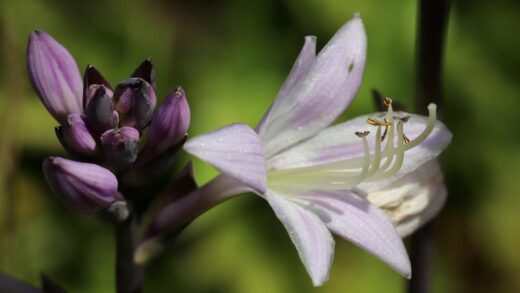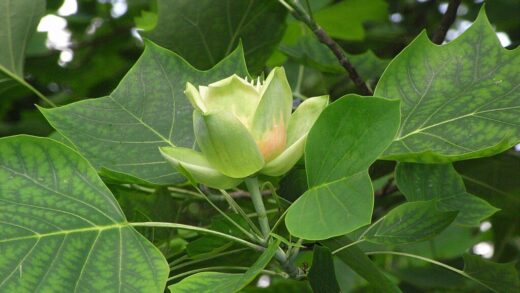Pruning and cutting back the rosy primrose

The maintenance routine for the rosy primrose is refreshingly simple, and this extends to its pruning and cutting back requirements. Unlike many garden perennials that require complex pruning to control their size, shape, or flowering, the rosy primrose has a neat, clump-forming habit that generally does not require any formative pruning. The primary tasks involve timely cleanup and the removal of spent tissue, practices often referred to as deadheading and seasonal tidying. These simple actions serve not only to improve the plant’s appearance but also to promote its overall health and direct its energy towards the most productive functions, such as root development and energy storage for the following season. Proper and timely cutting back is a key aspect of good garden hygiene, helping to prevent disease and ensure the plant remains vigorous and healthy.
The most significant pruning task associated with the rosy primrose is deadheading, which is the removal of the flower stalks after the blooms have faded. This is typically done in late spring or early summer. By cutting off the spent flower heads, you prevent the plant from investing a significant amount of its energy into the production of seeds. This conserved energy is instead redirected towards strengthening the plant’s crown and root system, which is essential for its survival and for producing an even more spectacular display of flowers in the subsequent year. This simple act can make a substantial difference in the long-term vigor of the plant.
As the season progresses beyond flowering, the focus of your attention will shift to the plant’s foliage. The leaves will remain green and attractive for a period, continuing to photosynthesize and build up energy reserves. During this time, no cutting back is necessary unless you spot a leaf that has been damaged or is showing signs of disease, in which case it should be removed promptly to maintain plant health. It is crucial to leave the healthy foliage intact for as long as it remains green.
The final phase of cutting back occurs in late summer or autumn as the plant prepares for dormancy. In many climates, the foliage will begin to naturally yellow and wither. This is a normal part of the plant’s life cycle, and it is important to allow this process to complete before you intervene. Once the leaves have fully died back and are brown and dry, they can be cut or gently pulled away from the crown. This final cleanup tidies the garden for winter and, more importantly, removes dead organic material that could otherwise harbor pests or fungal diseases.
Deadheading after flowering
Deadheading is the practice of removing spent flower stalks, and it is the most important “pruning” task you will perform on your rosy primrose. This simple procedure offers multiple benefits for the health and aesthetics of the plant. The primary reason for deadheading is to redirect the plant’s energy. Once a flower is pollinated, the plant’s biological imperative is to produce seeds, a process that consumes a great deal of metabolic energy. By removing the fading flowers before they can set seed, you encourage the plant to channel that energy into more beneficial areas, such as developing a stronger root system and healthier foliage.
More articles on this topic
This conservation of energy has a direct impact on the plant’s future performance. A rosy primrose that is allowed to produce seeds may have fewer resources available to store for the following season, which can result in a weaker plant and a less impressive floral display the next spring. Deadheading ensures that the plant’s reserves are maximized for overwintering and for fueling the initial burst of growth when spring arrives. For a perennial plant, this investment in its own root and crown structure is far more valuable than producing seeds, unless you are intentionally trying to collect them for propagation.
The process of deadheading is straightforward. As the individual flowers on a stalk begin to fade and drop, you can wait until the entire stalk looks past its best. Then, using a pair of clean scissors or pruning shears, simply cut the entire flower stalk off as close to the base of the plant as possible without damaging the surrounding leaves. This not only benefits the plant’s health but also instantly improves its appearance, keeping the clump looking neat and tidy and allowing the attractive foliage to become the main feature for the remainder of its active season.
While deadheading is highly recommended for optimal plant vigor, it is not strictly essential for the plant’s survival. If you have large, naturalized drifts of rosy primrose, it may be impractical to deadhead every single one. In such a setting, you might choose to let the plants self-seed, which can help the colony to expand over time, although individual plants may be slightly less robust than their regularly deadheaded counterparts. For most garden situations, however, the small amount of time invested in deadheading pays significant dividends in the health and beauty of the plants.
Managing foliage during the growing season
After the rosy primrose has finished its spectacular spring flowering and the spent stalks have been deadheaded, the plant’s foliage takes center stage. For much of the late spring and early summer, the leaves form a lush, attractive rosette of textured green foliage. During this period, it is crucial to leave this foliage completely intact. These leaves are the plant’s powerhouses, working to capture sunlight through photosynthesis and convert it into the energy that will be stored in the roots to fuel the next year’s growth and flowering cycle. Cutting back healthy green foliage would be like removing the solar panels from a solar-powered device, severely hampering its ability to function.
More articles on this topic
Throughout this post-flowering period, your main task is simply to monitor the health of the foliage. The leaves can act as an indicator of the plant’s overall well-being. If you notice any leaves that are yellowing, spotted with fungal disease, or have been significantly damaged by pests like slugs, it is good practice to remove them individually. Snip off the affected leaf at its base using clean shears. This targeted removal helps to prevent the spread of any potential diseases and keeps the plant looking tidy without compromising its energy-producing capacity.
In some gardening climates, particularly those with hot and dry summers, the rosy primrose may enter a period of summer dormancy. This is a natural survival mechanism. You will notice the foliage begin to yellow and wither, starting with the outer leaves and progressing inwards. It is very important to resist the urge to cut this foliage back prematurely. As long as there is some green left in the leaves, they are still transporting valuable nutrients and energy down to the roots. Wait until the leaves are completely brown and dry before you consider tidying them up.
The overall principle for managing foliage during the growing season is one of minimal intervention. The plant knows what it is doing, and the leaves are a vital component of its annual cycle. Your role is primarily one of observation and maintenance, ensuring the plant has the water and conditions it needs to support its foliage, and only removing leaves that are clearly dead, diseased, or damaged. This patient approach will allow the plant to build up the maximum amount of energy reserves for a spectacular performance the following spring.
Autumn cleanup and preparation for winter
The final stage of cutting back the rosy primrose takes place in the autumn as the plant prepares to enter its winter dormancy. As temperatures drop and daylight hours shorten, the foliage will naturally begin to senesce, or die back. The leaves will turn from green to yellow, and then to brown, as the plant withdraws all the remaining mobile nutrients from them and stores this energy in its perennial crown and root system. It is essential to allow this natural process to complete fully before you begin your cleanup.
Once the foliage is entirely brown and withered, it can be removed. In many cases, the dead leaves will be dry and brittle enough to be gently pulled away from the crown by hand. If they are still firmly attached, you can use a pair of clean scissors or hand pruners to cut them off at the base. The main purpose of this cleanup is to improve garden hygiene. Removing the dead foliage eliminates a potential overwintering site for pests, such as slug eggs, and reduces the amount of decaying material that could harbor fungal spores and promote crown rot during the wet winter months.
A clean crown area is much better equipped to handle the challenges of winter. Without a thick mat of decaying leaves trapping moisture against it, the crown is less susceptible to rot. It also allows for better air circulation on the soil surface. Tidying up the plant in this way leaves the garden bed looking neat and ready for winter, and it makes it easier to apply a protective winter mulch, should you choose to do so, without burying a mass of wet, decaying foliage along with the plant.
This autumn cleanup marks the final pruning task of the year for the rosy primrose. By this point, you have deadheaded the flowers to conserve energy and have now removed the dead foliage to prevent disease, leaving the dormant crown clean and ready for its winter rest. This simple, two-step annual process of cutting back is all that is required to keep the plant healthy, vigorous, and well-prepared to burst forth with its incredible display of color when the first signs of spring return.



















